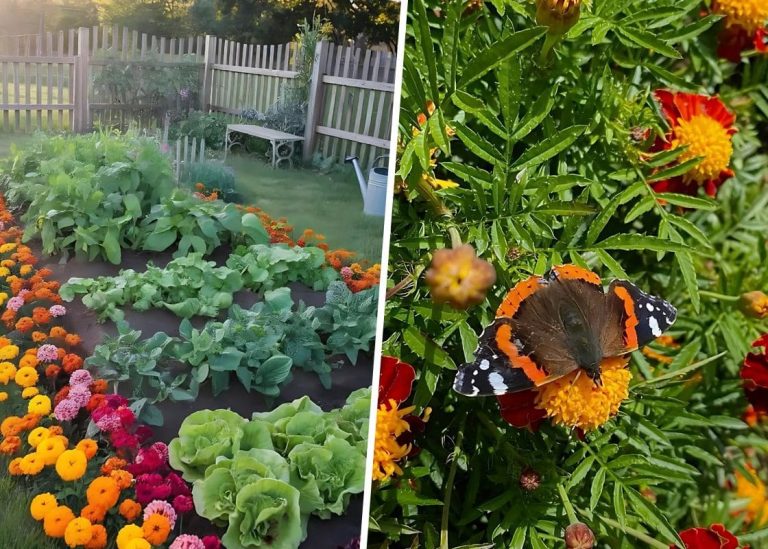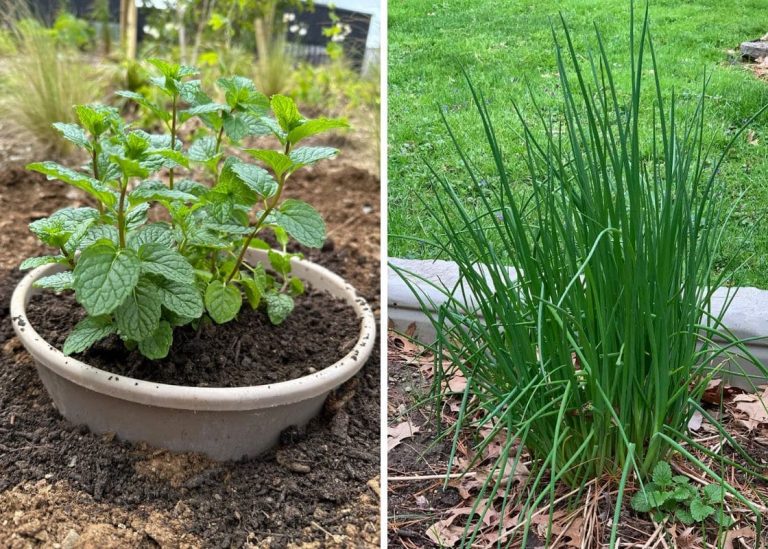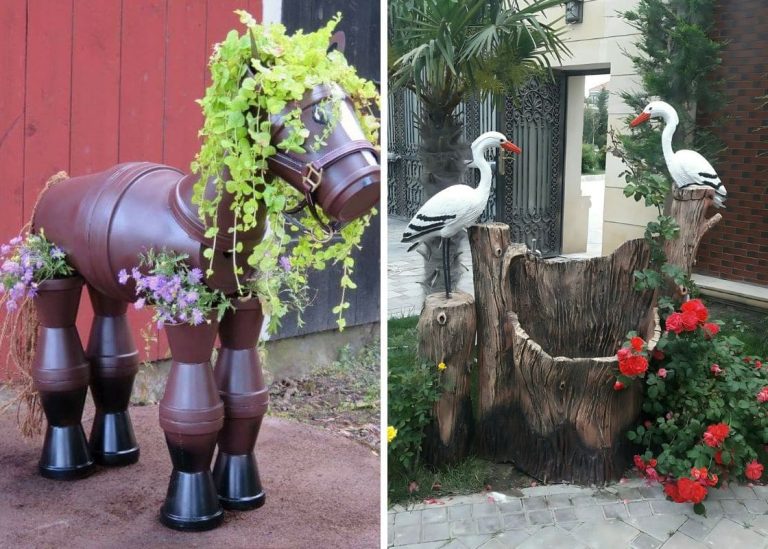21 Beautiful White Flowers to Brighten Any Garden
One foggy morning, the garden looked like it had been erased overnight. The colors were gone—petals closed, shadows softened, everything cloaked in pearl-gray silence. I walked out with coffee in hand, expecting quiet. But right by the garden gate, the white peonies were wide awake, catching the haze like lanterns. They don’t wait for sunshine; they make it.
In a world where gardeners chase color like treasure—bright dahlias, blazing zinnias, neon petunias—white holds a different kind of power. It glows after rain and glimmers in the dark. I’ve come to love them for their subtle magic. The gentle pause that lets everything else shine a little clearer.
These white flowers below are not just for their beauty, but for the way they shift the mood of a garden. Some bloom at night, some signal the very start of spring, and others linger long after everything else fades. These are the flowers that bring light, even when the sky forgets to.
#1. Gardenia
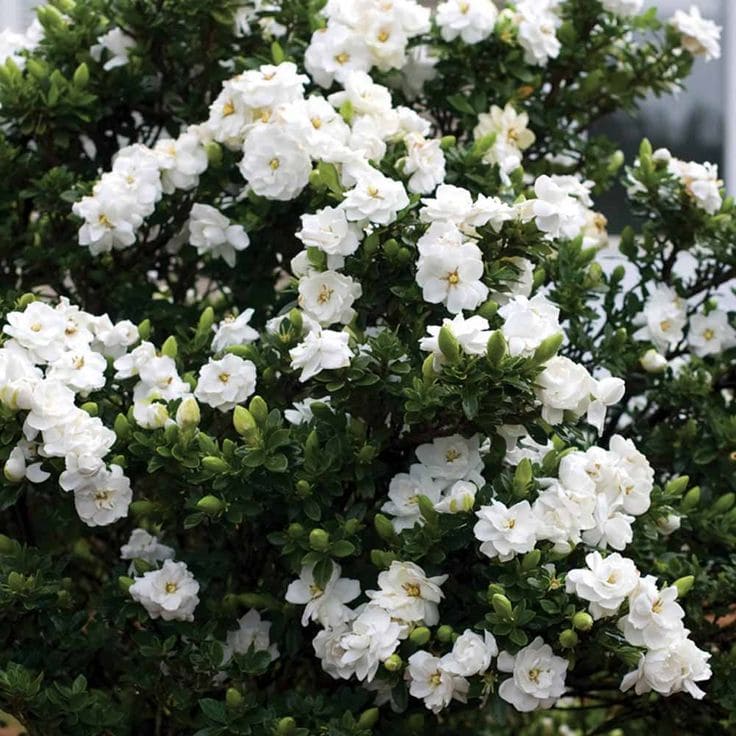
Every time I brush past a blooming gardenia, I’m pulled back to a memory of late summer evenings on the porch—my grandmother’s porch, to be exact—where the scent of gardenias floated in the heavy air like perfume. The creamy white blooms looked almost sculpted, tucked between glossy green leaves that stayed vibrant all year.
Gardenias are not the easiest guests in the garden—they’re fussy about soil, preferring it acidic and well-drained. They love humidity and warm temperatures, which is why they thrive in southern regions or in pots where you can control their environment. I like to mist mine in dry spells and give them a boost with a fertilizer made just for acid-loving plants.
If you’re in a cooler climate like I am now, try keeping them in a large container and moving them indoors once the chill arrives. It’s worth the effort for that fragrance alone—a bloom that doesn’t just perfume a garden, but a memory.
#2. White Rose
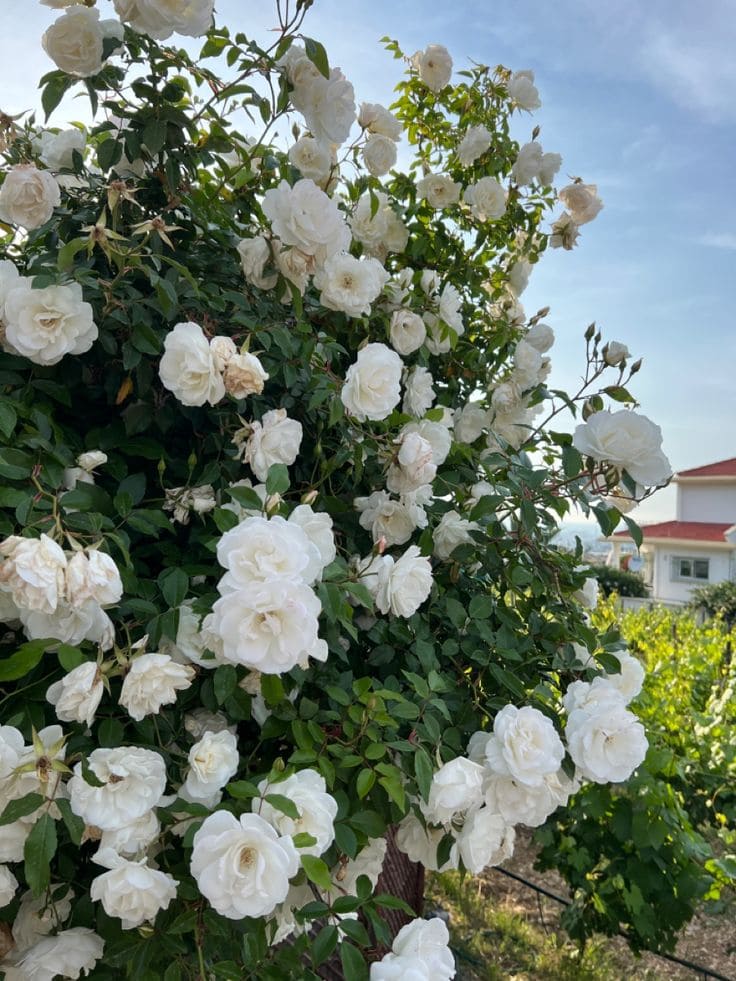
I planted my first white rose the year I got married. Something about it felt symbolic—pure, soft, resilient. That particular bush, a climbing variety, still grows near the arch where we said our vows, and every spring, it blooms like a quiet celebration.
White roses bring grace to any garden, whether in clusters along a fence or tucked into a pot by the patio. Choose a variety that suits your space—climbing for height, tea roses for bouquets, or shrubs for a fuller look. They need full sun, rich soil, and plenty of air circulation to stay healthy.
I always water at the base to keep the leaves dry and prevent mildew. And yes, I still talk to them. Roses, in my experience, listen best when you’re kind and consistent.
#3. Lily of the Valley
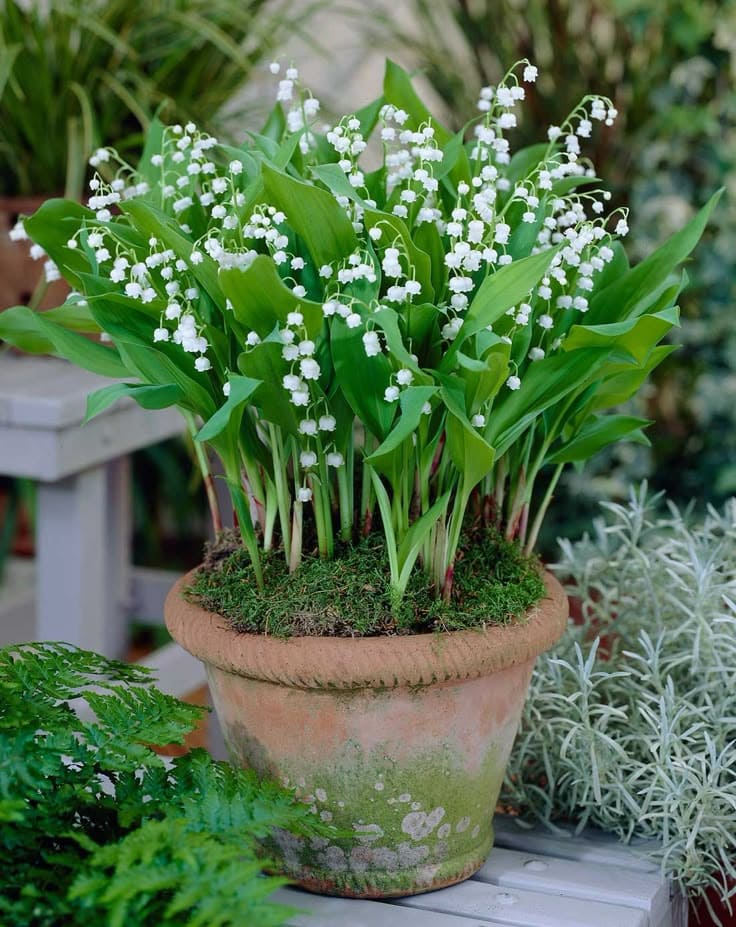
There’s a stretch of shaded earth beneath the old oak in my backyard that refuses to grow much of anything—except lily of the valley. I never planted it there; it just arrived, quietly, as if the woods had whispered it in. Now every spring, delicate white bells nod on their slender stems like shy dancers taking the stage.
It spreads gently but persistently, forming lush ground cover in cool, moist spots. I’ve learned to let it have its way—it thrives where others give up. Partial to full shade and well-drained soil are ideal, but it’s hardy and patient, needing little once established.
Do keep it away from curious pets and children, though—the entire plant is toxic. But for a peaceful, fairytale touch beneath trees or along shaded paths, it’s pure enchantment.
#4. White Hydrangea
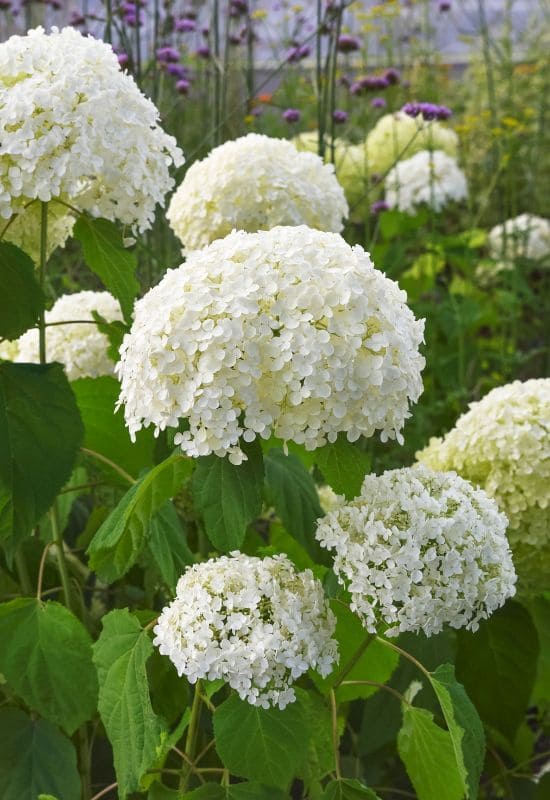
Hydrangeas are the show-offs of my summer garden, and none more so than the white varieties. ‘Annabelle’ is my go-to—it bursts into massive, fluffy clusters like clouds on stems, and when the breeze picks up, the whole shrub sways like it’s dancing.
These beauties prefer rich, slightly moist soil and partial shade, though they’ll tolerate morning sun just fine. I water mine deeply during dry weeks and mulch around the base to keep the roots cool. After they bloom, a gentle pruning helps them stay tidy and full.
They also dry beautifully. I often clip a few heads at the end of the season to hang upside down in the shed—little ghosts of summer that last well into fall.
#5. Snowdrop

The first snowdrop bloom is always a surprise. One February, I spotted a patch poking through the crust of snow by my garden bench—and I swear my heart skipped. So small, so quiet, but so determined to bloom in the coldest breath of the year.
Snowdrops don’t need much fuss. Plant the bulbs in autumn in partial shade and well-drained soil, and they’ll return each winter like clockwork. Let the foliage die back naturally—it helps them store energy for next year’s bloom.
They pair beautifully with other early risers like crocus and hellebore, and I like to scatter them through borders like little stars sprinkled in the earth.
#6. White Camellia
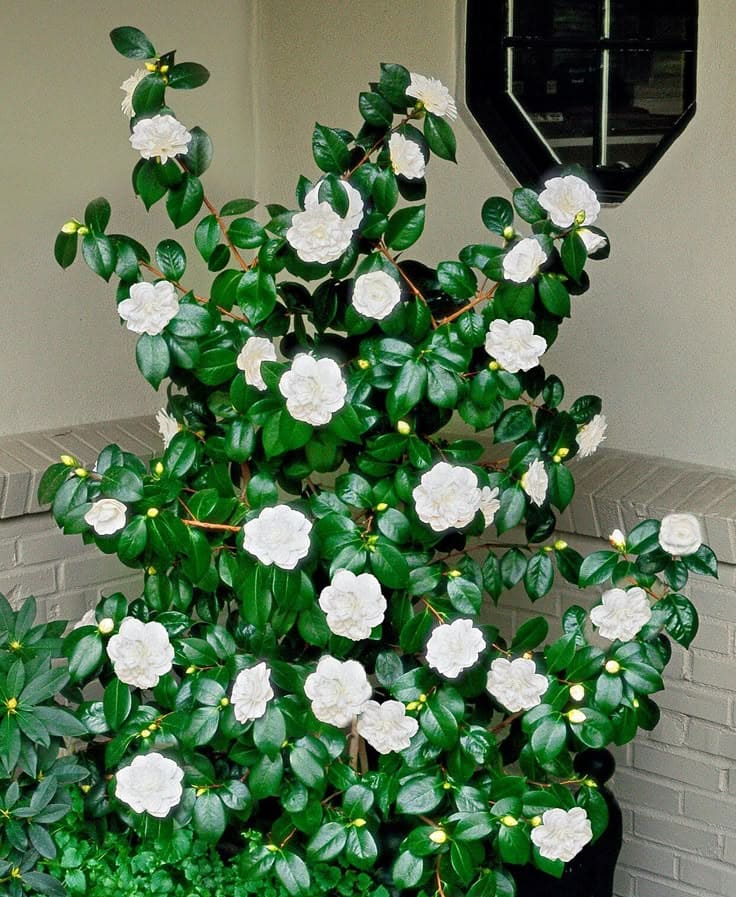
My neighbor Mei planted a row of white camellias along our shared fence. Every winter, just when the world looked its dullest, those blooms would appear like porcelain teacups peeking through glossy green leaves. She called them her “snow spirits.”
They prefer acidic soil, dappled shade, and a spot sheltered from strong wind. I’ve found they sulk in direct sun, so give them protection and mulch the base in colder zones. Their quiet beauty is worth every bit of care.
#7. Moonflower
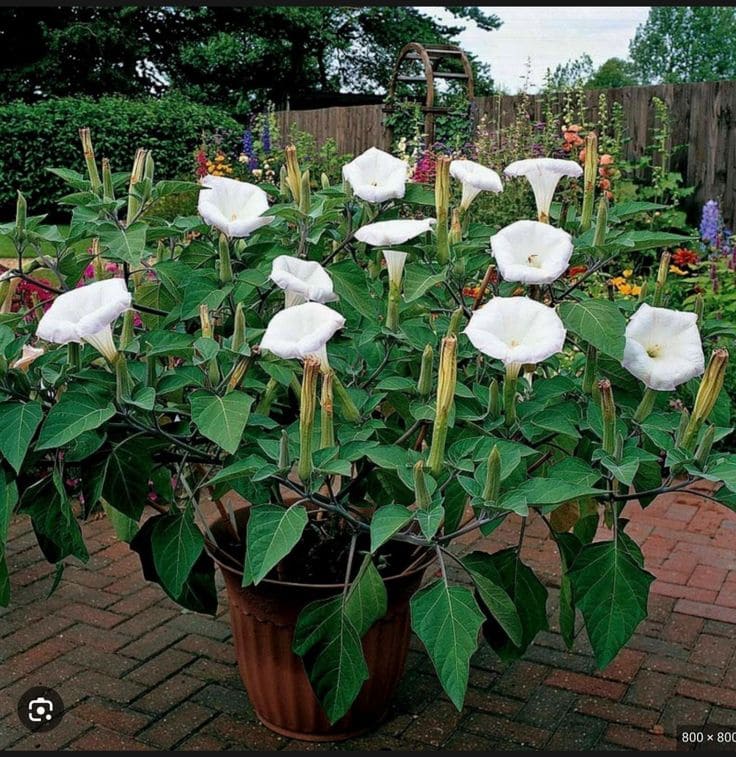
My oldest son once stayed up past bedtime just to watch a moonflower open. It was dusk, and the bloom spiraled open slowly, as if responding to some silent music. He whispered, “It’s like it’s breathing.”
Moonflowers love warm weather and full sun during the day. Plant them near a fence or trellis—they’re climbers—and water regularly. I sow mine every spring and never tire of their nighttime glow.
#8. White Tulip

I bought a pack of white tulip bulbs on a rainy impulse trip to the garden center—no plan, no scheme. Months later, they bloomed in front of the mailbox, neat and elegant, like they knew exactly what they were doing.
Plant in fall for a spring bloom. They need sun and well-drained soil. After flowering, let the foliage fade before cutting back—it fuels the next year’s growth.
#9. Calla Lily
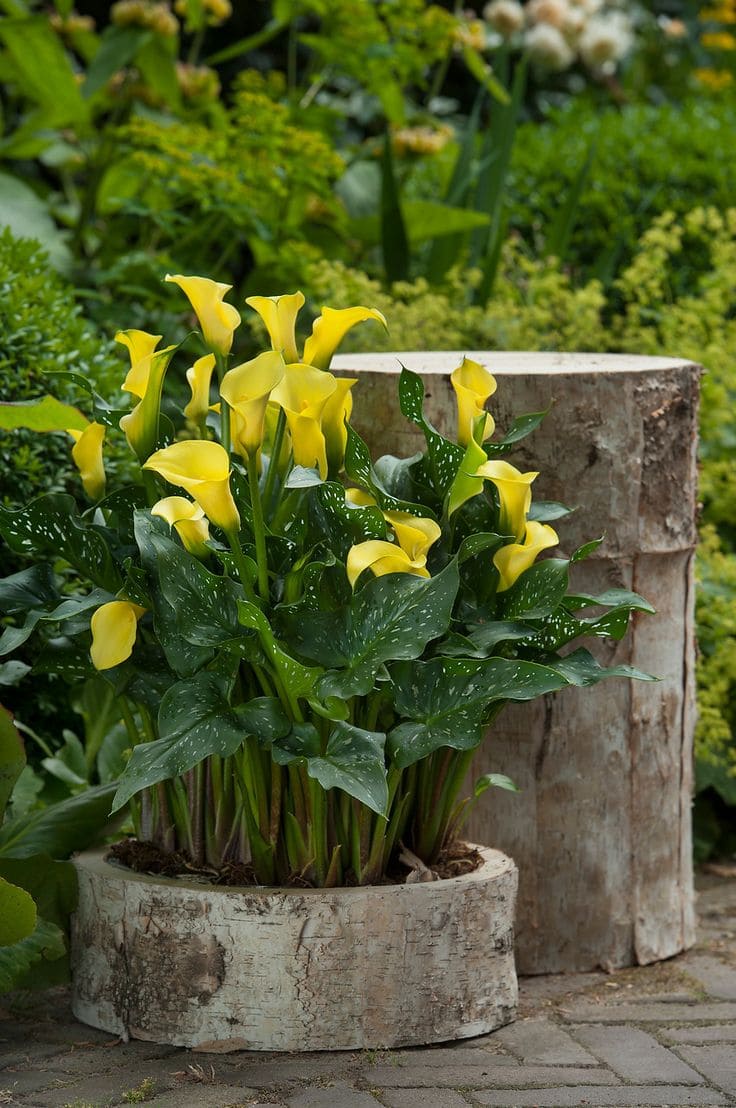
When my friend Clara got married, she carried nothing but white calla lilies—no ribbon, no frills. I remember thinking how sculptural and graceful they were, like nature’s own bouquet.
Callas prefer moist, rich soil and partial sun. In cold climates, dig and store the rhizomes for winter. I keep mine in a ceramic pot near the pond where they feel most at home.
#10. White Daffodil
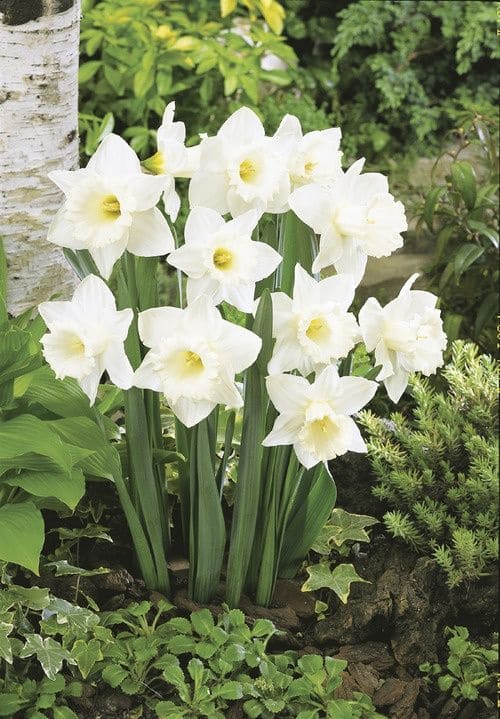
Each spring, I plant a few extra daffodil bulbs near the front gate just for the mail carrier. One year, he left a note: “Thanks for the greeting—made my day.” It was a white variety called ‘Thalia,’ soft and understated.
Daffodils are reliable and low-maintenance. Plant bulbs in fall, give them sun and drainage, and they’ll return like clockwork. Just let their foliage yellow before trimming.
#11. Jasmine
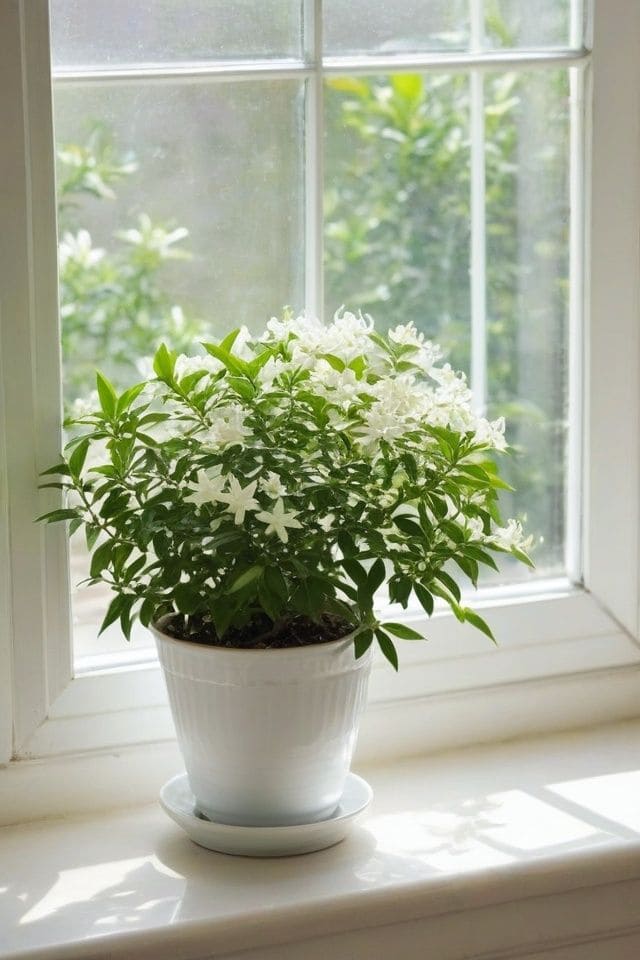
My cousin keeps jasmine vines along her kitchen window. In the evenings, when the light dims and the kettle’s on, their scent drifts through like a lullaby. She says it reminds her of her mother’s hair oil.
Jasmine thrives in full sun and well-drained soil. I prune mine right after flowering to keep it in check and water deeply during dry spells. If you plant it near a window or patio, the fragrance will greet you like a gentle hello each night.
#12. White Peony
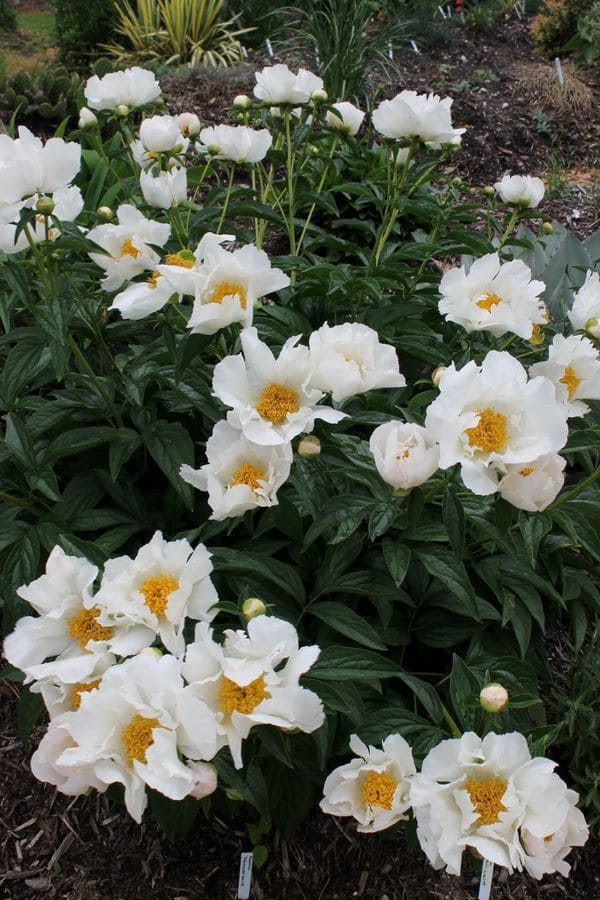
The first time I brought a white peony bloom indoors, my youngest mistook it for whipped cream in a bowl. He tried to sniff it—then sneeze-laughed when the pollen tickled his nose. It was ‘Festiva Maxima,’ bursting with ruffles and grace.
Peonies like a cold winter and sun-rich soil. Give them space, and they’ll reward you with blooms that last for decades. I always stake mine early—they get heavy with beauty fast.
#13. White Cosmos
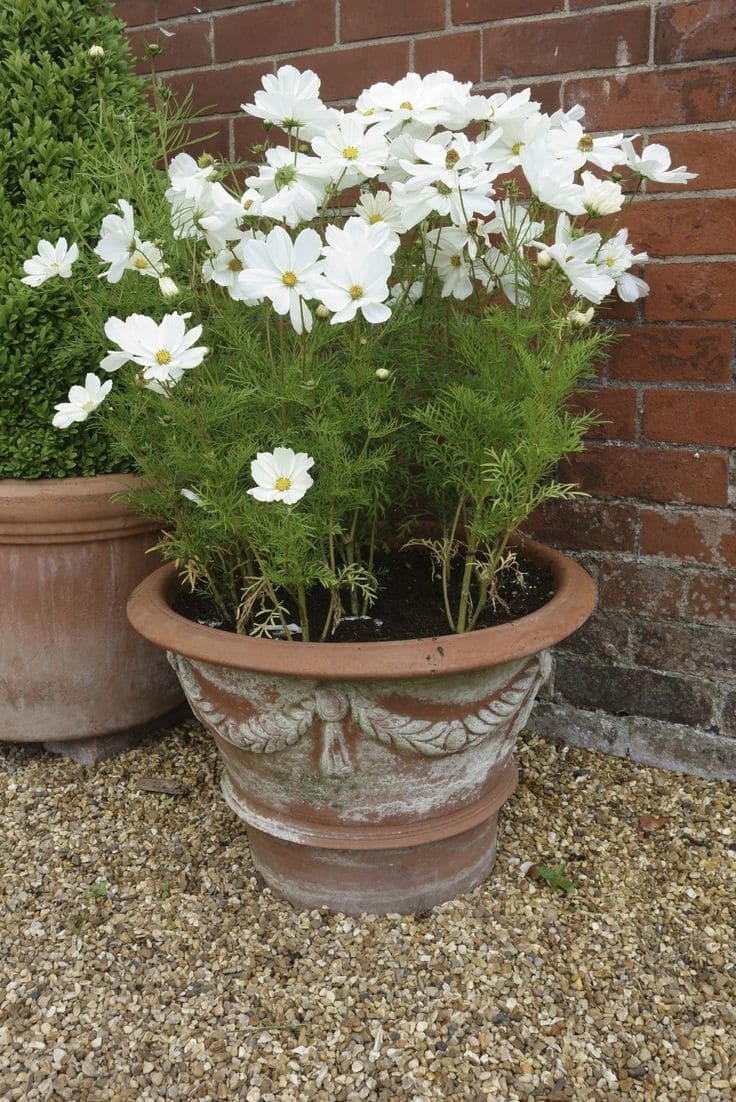
My college roommate, Naomi, once sent me a packet of white cosmos seeds with a note: “For the chaotic kind of beauty.” She was right—they’re carefree, charming, and bloom like they don’t know how to stop.
Plant them in full sun and average soil—they actually prefer it a bit poor. Deadhead regularly for endless blooms, and don’t be afraid to let them lean and sway; they dance best with the wind.
#14. White Foxglove
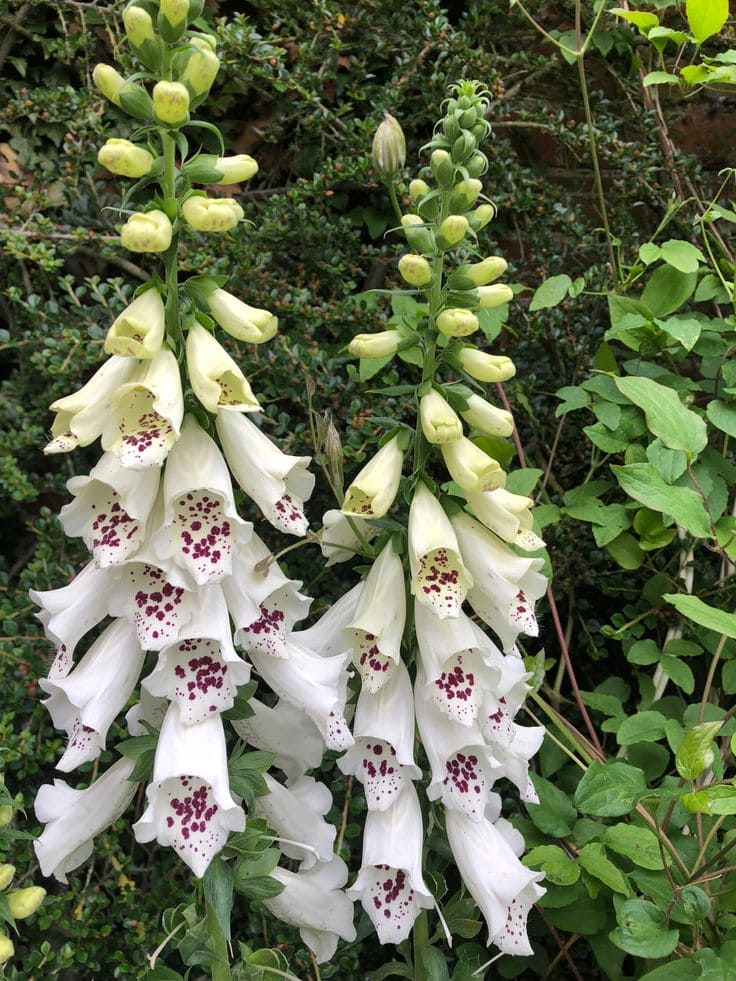
There’s a spot in my cottage garden I call the “moon corner.” It gets filtered light in the mornings and glows with tall spires of white foxglove in June. A visitor once said it looked like a page from a fairy tale.
Foxgloves are biennial, so you’ll plant them one year and enjoy the show the next. They self-seed gently and prefer partial shade and well-drained, slightly acidic soil. Just a warning: they’re stunning—but toxic. Plant mindfully.
#15. White Bleeding Heart
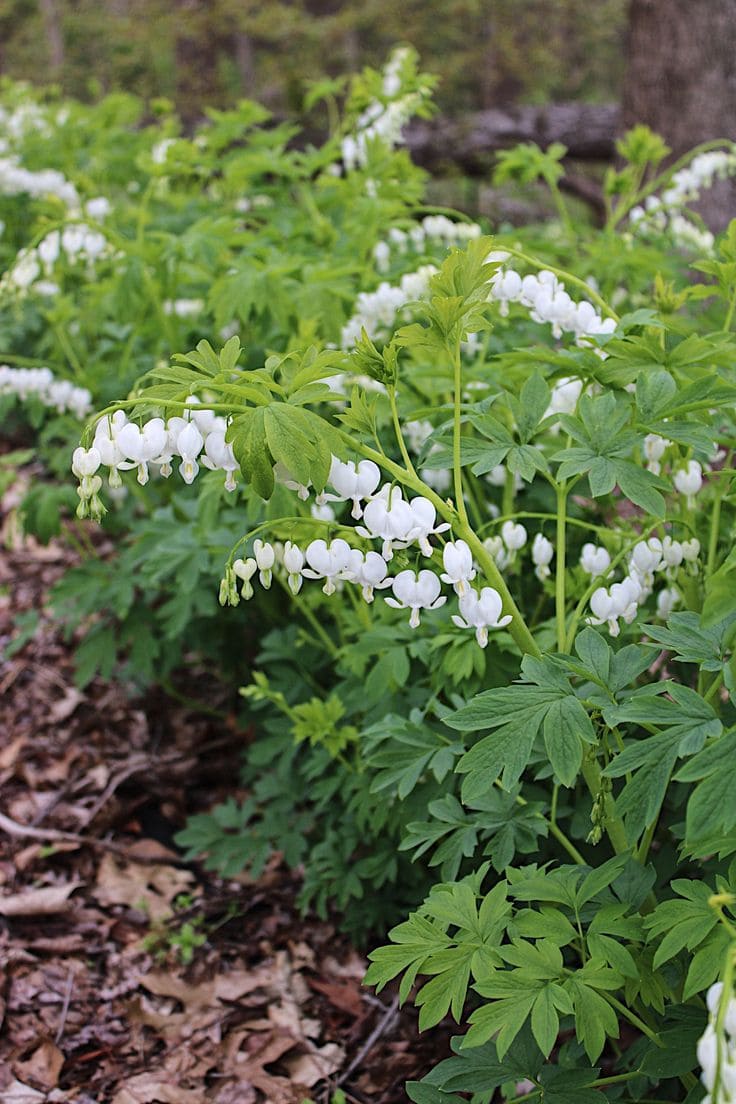
After my grandfather passed, my mother added white bleeding hearts near his favorite bench. She said they looked like tiny lanterns weeping in slow motion, soft and solemn, but also strangely hopeful.
They do best in shady areas with rich, moist soil. I pair them with ferns and hostas for texture. Once summer heats up, they go dormant, so I like to tuck in later bloomers nearby to fill the gap.
#16. White Anemone
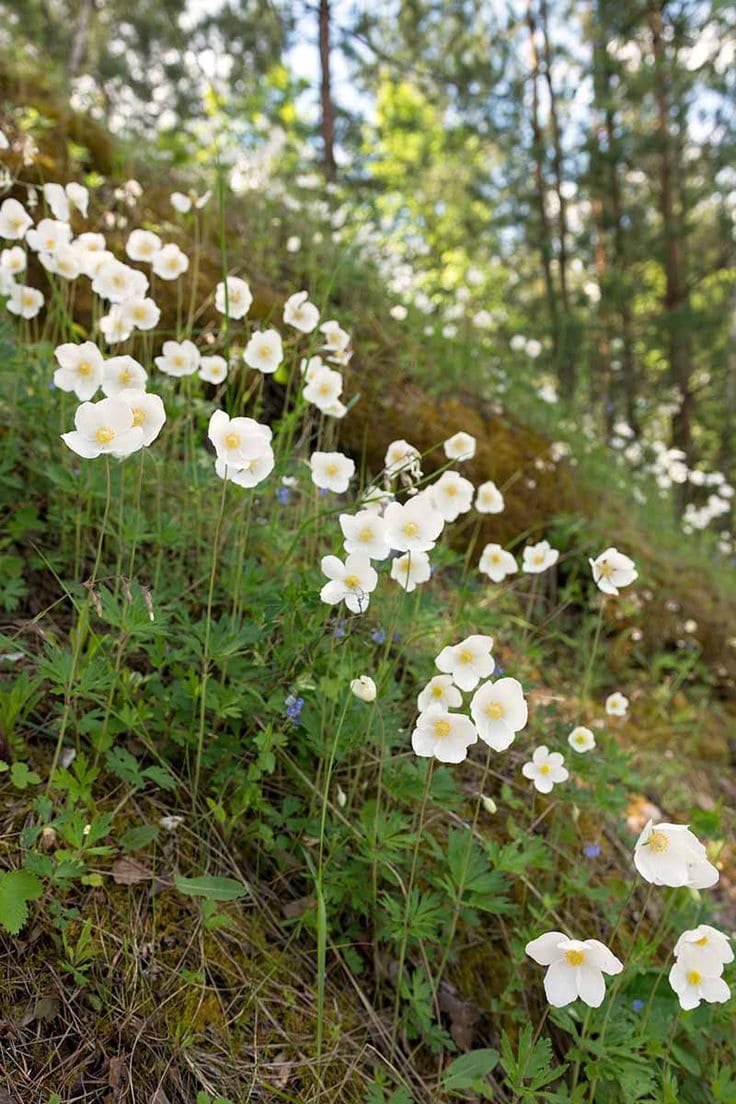
My aunt used to say anemones were the garden’s ballerinas—light on their feet, always poised. The white ones, with their dark centers and silky petals, looked like they were caught mid-twirl under the autumn sun.
They love partial sun and soil that drains well but doesn’t dry out. I plant them near walkways so I can watch them flutter in the breeze. They pair beautifully with late-season grasses and purples for contrast.
#17. White Dahlia
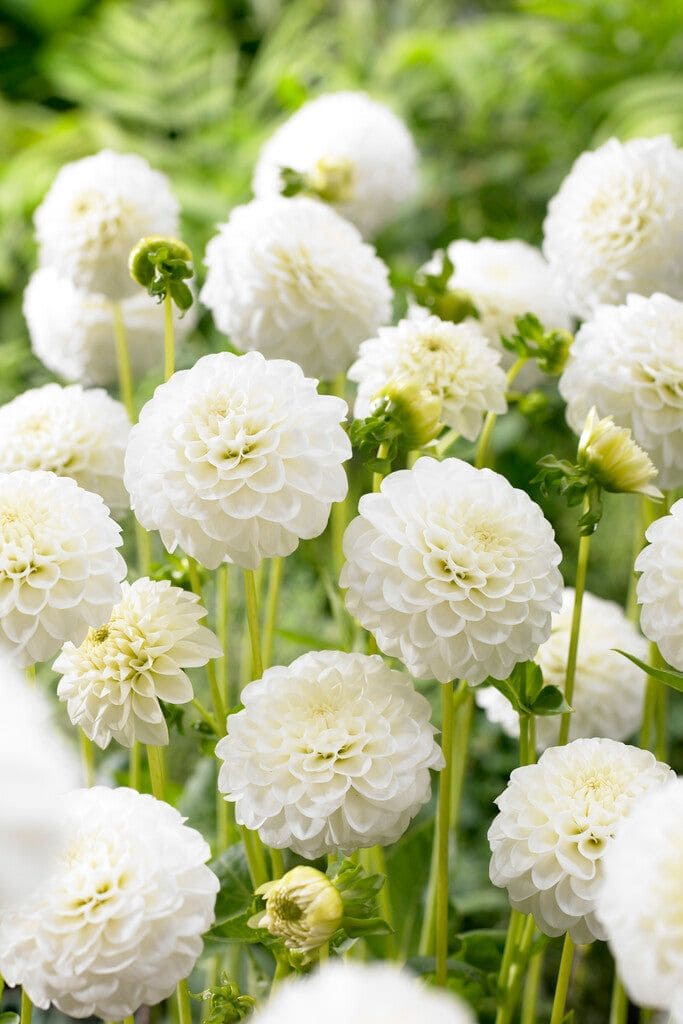
One September, I clipped a ‘Café au Lait’ dahlia for my neighbor, Mrs. Hughes, who had been in the hospital. Her face lit up when she saw it—“This looks like a wedding cake,” she whispered. It was pure cream and petals.
Dahlias love rich, composted soil and full sun. In cooler zones, lift the tubers before frost. I find staking early helps avoid heartbreak—those heavy blooms need support as much as admiration.
#18. White Carnation

We tucked white carnations into my daughter’s recital bouquet—simple, sweet, with that peppery scent I’ve loved since childhood. They outlasted the lilies and roses and stayed fresh through her encore at home.
They grow best in full sun with fertile, well-drained soil. I feed them lightly every few weeks and remove fading blooms to keep them coming. If you love cut flowers, these are your reliable stars.
#19. White Hibiscus
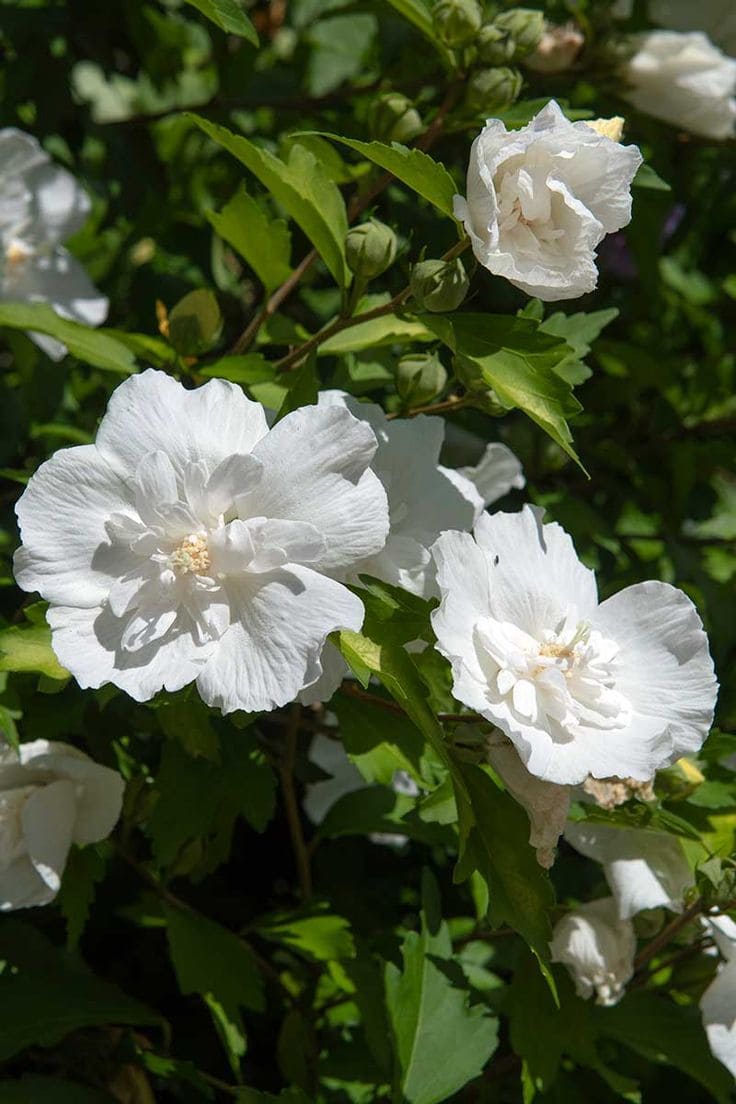
On sweltering days, the hibiscus near our back fence flutters like a fan. White blooms the size of my palm open fully by midmorning, attracting bees that dive straight into the center.
Hibiscus needs heat, sun, and plenty of moisture. I prune mine lightly after the first flush and feed it with a balanced fertilizer during active growth. It brings a tropical breeze to even the smallest backyard.
#20. White Phlox
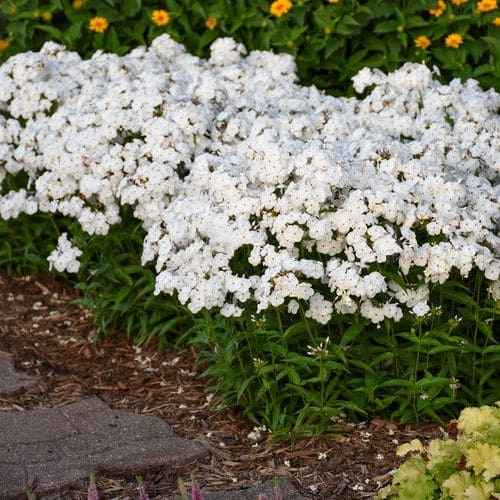
Phlox was one of the first flowers I grew from seed. I remember checking it every morning that summer, waiting for the first cluster to bloom. When it did, it filled the air with soft sweetness and drew in butterflies like a magnet.
Give it sun and fertile, well-drained soil. Deadheading keeps it blooming longer, and dividing every few years helps prevent overcrowding. It’s a cottage garden essential that asks little and gives plenty.
#21. White Zinnia
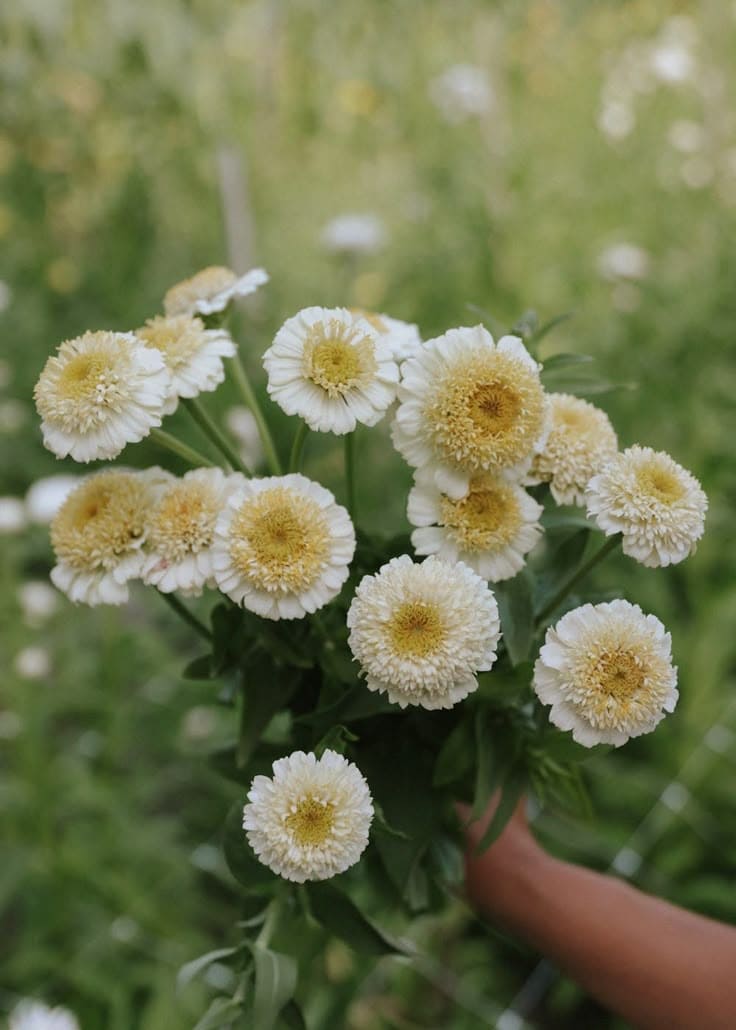
We call white zinnias our “gap fillers” at home, but that doesn’t mean they fade into the background. In a hot, dry summer, they bloom with no drama—clean, crisp, and always cheerful. The variety ‘Polar Bear’ is my favorite for its brightness and resilience.
Zinnias thrive in sun and average soil. Water at the base to prevent mildew, and don’t forget to deadhead. They make excellent cut flowers, especially for kids picking their first bouquet.
Final Thoughts
White flowers may not flash with fire, but they bring clarity and calm like no other. They light up a shady path, soften bright borders, and offer rest to the eye and spirit alike.
Gardening with white isn’t about going without color. It’s about honoring light, balance, and beauty in its most gentle form. I hope this list inspires you to find a spot for one—or many—in your garden.



